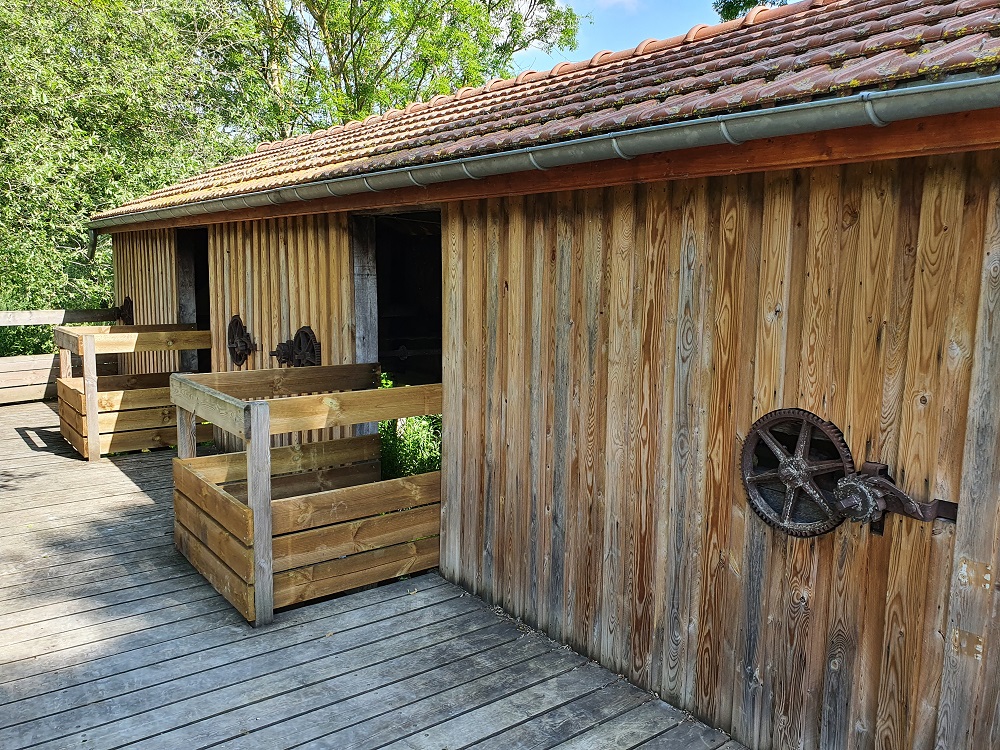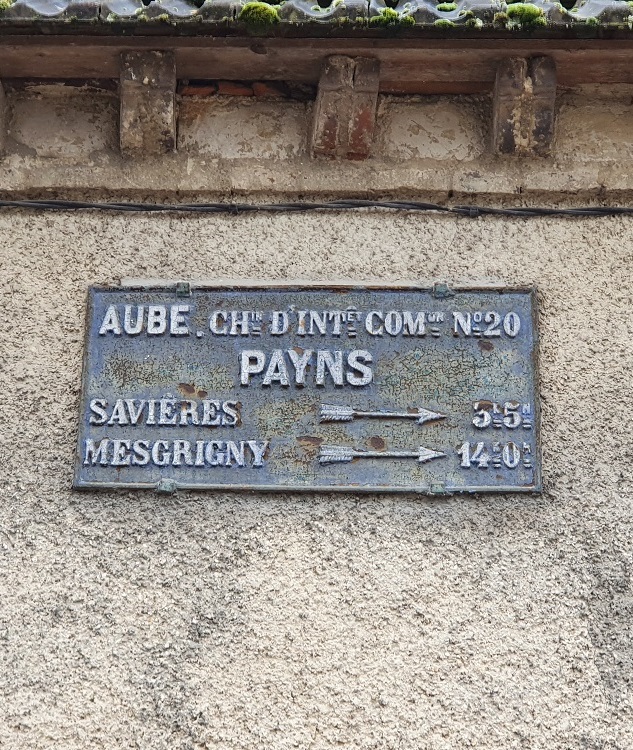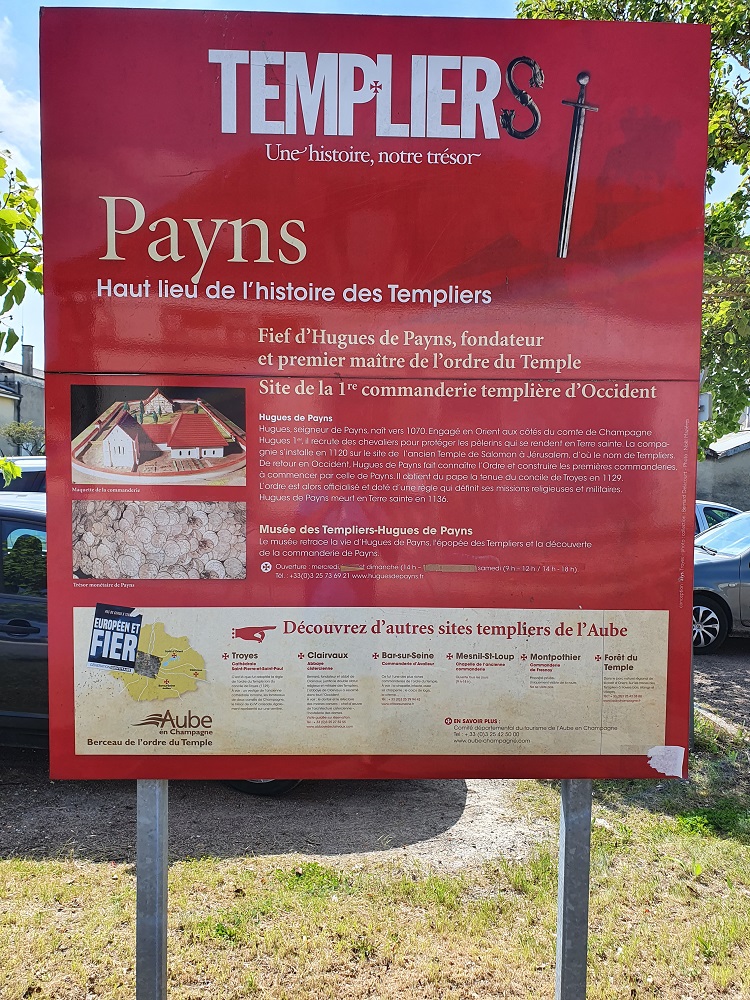This commune covers an area of 17km² and has around 1320 inhabitants who are known as ‘Payntiers’. It is located 15km north of Troyes. Reached via the D20, D165, D442 or the D619, it is 15 minutes from junction 22 (Charmont-sous-Barbuise) of the A26 between Calais and Troyes.
Paynes holds two flowers from the Villes et Villages Fleuris organisation. The commune has a nursery school and a primary school. It is surrounded by fields, woods and the Seine, which adds to the rural character that surrounds the legends associated with the village.
Hugues de Payns, a knight who lived in the late 11th and early 12th centuries, dying in 1136 or 1137, took part in the Council of Troyes and founded Order of the Knights Templar. The first Master of the Temple, he set up a Commandery in Payns. It has now disappeared, but traces can still be seen as certain times of the year. The Musée des Templiers has made a model to help visitors visualise the building and revive local interest in the Knights Templar.
The church of the Assomption-de-la-Vierge is located on the edge of the village on the main road from Troyes. It is a striking example of a 19th-century building based on the architectural styles of the past.
The nave, transepts and bell tower are designed to point upwards and recall the churches that sprang up in the gothic period. It retains two items of church furnishing that are classified as historic monuments: a Madonna and Child and a Pietà, both of which are limestone and date from the 16th century.
Payns remembers and honours those who were killed in the First and Second World Wars. On the main road, a first-world-war soldier, captured mid-movement, stands on a pedestal to commemorate the ‘children of Payns who died for France’ between 1914 and 1918. In a small lane off the Rue des Maupas, a stone commemorates the 4 civilians who were shot on 22 August 1944.
TO FIND OUT MORE
>>> Commune website
>>> Accomodation
>>> Catering
>>> Shops and Services


